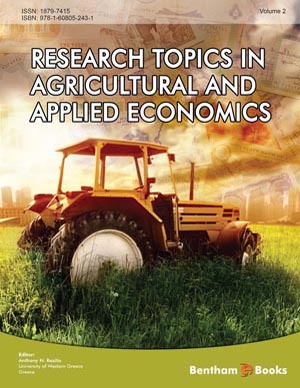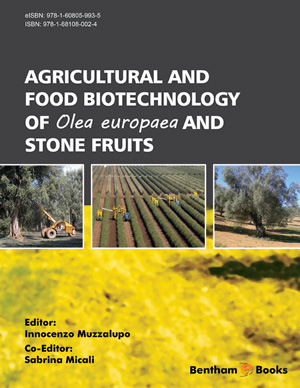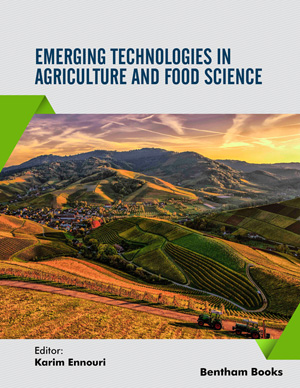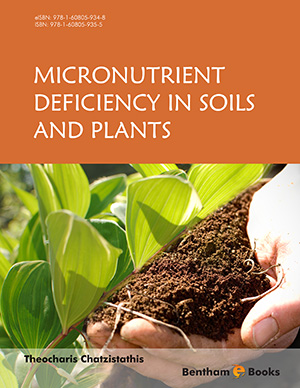Book Volume 2
Abstract
Full text available.
The Italian Demand for Imported Virgin Olive Oil: A Threshold Almost Ideal Demand System Approach
Page: 3-18 (16)
Author: Monia Ben Kaabia and Jose M.Gil
DOI: 10.2174/978160805243111102010003
PDF Price: $15
Abstract
This paper analyses the import demand for virgin olive oil in Italy, which concentrates more than 80% of European Union (EU) imports. More precisely, it aims at determining the relative position of Mediterranean EU and non-EU countries exports in the Italian market and their degree of substitutability or complementarities. The methodology used is based on the specification of a Threshold Almost Ideal Demand System (TAIDS) in which special attention has been paid to the stochastic properties of the series involved. In an empirical context, the paper aims at providing a set of import demand elasticities that can be useful in trade policies. Results point to Spain as the leader in the Italian virgin olive oil market. It is expected that this position will be maintained in the future. Greece has improved its relative position after its accession into the EU. However, imports coming from Greece are highly dependent on the situation in Spain. Tunisia has good potential for future exports development as a consequence of new perspectives of trade liberalisation taking into account its relative position in the Italian market, in spite of its current exports constraints due to existing quotas.
Food Crisis: Did Agricultural Prices Rise Faster than they Fell?
Page: 19-30 (12)
Author: Matthieu Stigler and Piera Tortora
DOI: 10.2174/978160805243111102010019
PDF Price: $15
Abstract
International agricultural markets have experienced important price fluctuations recently, with prices spiking in 2007-2008 and then declining sharply in 2008. While domestic prices generally followed these increases, there is concern that they remained at high levels despite decreases in international prices. This issue of asymmetry between downward and upward price transmission has been widely discussed in economic literature, and some authors have argued that such asymmetry is the rule rather than the exception. With its sustained price increase followed by a large decrease, the food price spike provides an ideal case to test this hypothesis. We assess this question empirically by investigating a sample of small wheat importing countries. We use time series models which allow for asymmetries - namely regime switching cointegration techniques - to examine whether the international price spike and its subsequent decline have been transmitted to domestic markets to the same extent. Out of the four countries we investigate, we find a clear case of a downward asymmetry, a clear case of upward asymmetry, the remaining two countries yield less definitive results.
New Trends in Consumer Needs: Functional Foods in the European Market
Page: 31-45 (15)
Author: Azzurra Annunziata and Riccardo Vecchio
DOI: 10.2174/978160805243111102010031
PDF Price: $15
Abstract
Over the last decade foods have not been intended only to satisfy hunger and provide necessary nutrients but also to prevent nutrition-related diseases and improve the physical and mental well-being of consumers. Hence healthier food products have entered the global markets with force in the past few years and rapidly gained market shares. The food industry has reacted to this trend by developing a growing variety of new products with health-related claims and images. However, due to limited consumer knowledge and awareness of the health effects of newly developed functional ingredients, there are strong needs for communication activities. The role of information is crucial since consumers cannot perceive the benefit directly from the product, unlike taste and other sensory characteristics. The type of information and trust in it regarding the effect of a particular product on health represent additional factors behind the success of functional foods. Based on these considerations this chapter offers an overview of the functional food (FF) market in Europe and ascertains the opportunities for further expansion of this segment. Consumer behaviour towards FFs was analyzed through a quantitative survey conducted on 400 Italian food shoppers. Our findings reveal that respondents are confused due to the ambiguity of what FF products are, and that consumers perceive products that are intrinsically healthy such as yogurt, cereals and juice, as preferable and credible carriers of FFs. Moreover, use of principal components analysis highlighted the key role played by the perception of healthiness in determining shoppers’ attitudes towards FF.
Consumer Knowledge of Animal Welfare Standards
Page: 46-57 (12)
Author: Riccardo Vecchio and Azzurra Annunziata
DOI: 10.2174/978160805243111102010046
PDF Price: $15
Abstract
European Union (EU) directives identify specific quality and quantity characteristics of the spaces where animals are kept and detailed breeder behaviour aimed at minimizing animal suffering. The development of European legislation over the years has been characterized by broadening of the scope of action and by an increase in the number of species covered by definitive rules. However, while EU legislation has progressively focused on granting animals better possibilities to express their behavioural repertoire, recent analysis shows that consumer knowledge of animal welfare compulsory standards is still quite limited. This is particularly true for the farming conditions of layer hens even though animal welfare in poultry production systems in the EU has received great legislative attention. Drawing on the results of a direct survey on 300 Italian food shoppers, our research analyzes consumer knowledge of the welfare standards of laying hens. Our findings show that, although the majority of the sample (79%) expressed concern on hen husbandry systems, 67% of respondents were unaware of the current mandatory labelling system for eggs. Through cluster analysis three segments were found: the inactive consumer cluster (39%) that groups respondents claiming not to take animal welfare into account in their food purchasing decisions, the so-called conflicted consumer cluster (48%) including individuals that are reluctant to accept responsibility for animal welfare through their demand for animal-friendly food products, and the ethically competent consumer cluster (13%) consisting of respondents very concerned about animal welfare. Our findings highlight important market opportunities and policy implications.
Consumer Geographic Segmentation and Valuing Attributes of Wine in Supermarket: An Hedonic Approach
Page: 58-72 (15)
Author: Juan Carlos Ortuzar and Oscar Alfranca
DOI: 10.2174/978160805243111102010058
PDF Price: $15
Abstract
The main objective of this study is to determine the relevance of the main attributes for wine, in some geographic areas in supermarket of Santiago, Chile. The study allows us to estimate how different the value of wine characteristics could be depending on different geographical areas. The information used is a panel database for stores. Information from wine guides is also to be considered. These wine guides relate ranking positions with quality attributes. An hedonic model will be estimated. Hedonic models have been widely applied to determine the main characteristics of wine. In general, hedonic studies have focused on wine color or price level segmentation, but these have not been associated with different geographic areas associated with different socioeconomic levels. In this paper, brands and ranking appear to be relevant characteristics for wine value in all segments, mainly because consumers have been exposed to marketing activities, and can detect quality differences between wine brands. The size of bottle is very relevant.
Territory Image and Notoriety as Sources of Equity in the Wine Market
Page: 73-84 (12)
Author: Domingo Calvo Dopico
DOI: 10.2174/978160805243111102010073
PDF Price: $15
Abstract
The world wine market is mature, together with an increasingly global, open and very competitive environment. Companies have to face the challenge of achieving differentiated quality based on the creation of equity. One of the mechanisms to build this differentiation is the creation of strong brands. The objective of this paper is to find out which sources of brand equity could endow the product with a higher differentiation. To respond to this objective, we carried out a study with five Spanish collective brands: Rioja, Valdeorras, Ribeiro, Rias Baixas, and Ribera de Duero. A panel of 296 consumers assessed the dimensions of brand equity for each of them. Results reveal that the most important source of equity, from the consumer’s point of view, in explaining the formation of brand equity, is territory image. Territory image is a differentiating factor used by consumers to identify and recognise a specific brand among the many alternatives, as well as shaping an excellent source to equity in the consumer’s mind. Another important source of equity is notoriety. Individual or collective efforts in investments to create notoriety and territory image would be very important in creating a strong brand. This is an excellent way to build authentic brand equity. Regarding wineries, the procurement of authenticity will be critical in commanding price premiums and obtaining an advantage against potential competitors.
Means-end Chain Analysis of Food Products with Origin Quality Labels: An Application to Wine with Designation of Origin
Page: 85-106 (22)
Author: Ramo Barrena and Mercedes Sanchez
DOI: 10.2174/978160805243111102010085
PDF Price: $15
Abstract
For some agro-food companies, a product-positioning strategy based on product origin or a specific production method has become a viable option in increasingly globalized settings. The adoption of this approach to create added value for consumer products nevertheless requires balanced consideration of objective productperformance factors and the subjective judgments of potential consumers. This study sets out to analyze relationships between origin-based differentiation features of food products and the personal values on which consumers base their purchase decisions by applying means-end chain methodology through an interviewing technique known as laddering. The resulting proposal is that food-product positioning or communication strategies should not be based on attributes alone, but should also consider consumer personality factors. The study uses the wine market, where many of the products are differentiated by means of origin quality labels, to measure the relative impact of objective and subjective (or emotional) factors on the purchase decision, taking consumption frequency into account. The results show that regional sentiment and quality issues dominate the choice process, while consumption is associated with a sense of belonging and hedonic benefits. Consumers less interested in DO-labelled wine pay less attention to quality cues and product differentiation factors.
Is There a Future Market for Genetically Modified Food? An Analysis from Southern Spain Consumer Preferences
Page: 107-120 (14)
Author: Macario Rodriguez-Entrena and Samir Sayadi
DOI: 10.2174/978160805243111102010107
PDF Price: $15
Abstract
Genetically modified (GM) foods have generated intensely negative consumer attitudes in the European Union (EU); so the concerns about food safety and environmental conservation have increased. Based on a survey of 448 people, an empirical application in the southern Spain is presented. Firstly, some questions regarding food safety and quality are raised in order to know consumer’s concerns about these issues. Secondly, the Conjoint Analysis (CA) method is applied to estimate consumer’s preferences structure in relation to a hypothetical genetically modified (GM) cornflakes cereal, as an alternative of real product. Later, to analyze the sensitivity of the attributes considered in the experimental design, which characterized the GM cornflakes cereal, market shares have been simulated. Finally, market segments based on consumer’s preferences for the GM cereal are identified by means of Cluster analysis. The main results indicate that consumers prefer the conventional ones, despite the advantages offered in the research by GM cornflakes. Notwithstanding, consumers reject the 2nd generation of GM foods less than the 1st generation ones. In this regard, the GM cornflakes enriched with Omega-3 would get a relevant market share in the future. Additionally, findings show that five market segments have been determined. Two segments called “Anti-GM” and “Extremely Anti-GM” show the highest resistant to purchase products derived from genetic engineering. On the contrary two segments are related to the GM food accepters (“Pro-GM”; “Pro-2nd GM”) and the last one focuses on the price (“Price sensible and indifferent quality”).
Global Crisis and Agricultural Public Spending in Kenya: A SAM Multiplier Approach
Page: 121-142 (22)
Author: Maria Sassi
DOI: 10.2174/978160805243111102010121
PDF Price: $15
Abstract
This paper focuses on Kenya with the purpose of understanding the role of public spending in the primary sector in addressing the current food crisis and in contributing to overall economic growth and alleviating poverty and food insecurity according to the first Millennium Development Goal. The empirical investigation, based on the 2003 Social Accounting Matrix, integrates two distinguished models - the unconstrained and constrained multiplier models - for a better characterisation of the country’s economic linkages in a context of international market volatility. Results point to the potential positive impact of government intervention in agriculture on economic development and its limits, particularly with reference to the growth-equity nexus.
Measuring the Relative Efficiency of Bank Branches: The Case of the Agricultural Bank of Greece
Page: 143-154 (12)
Author: Anthony N. Rezitis, Alexande Pailas and Maria A. Kalantzi
DOI: 10.2174/978160805243111102010143
PDF Price: $15
Abstract
This paper investigates the relative efficiency of a sample of 19 bank branches of the Agricultural Bank of Greece for the years 2002 and 2003 by using data envelopment analysis. The present study uses the intermediation approach to define bank inputs and outputs. The empirical results indicate that 36.8% of the bank branches operated fully efficiently in both years. In addition, the results indicate that for the input-oriented DEA the mean efficiency levels are 81.9% and 79% for the years 2002 and 2003, respectively, while for the outputoriented DEA the mean efficiency levels are 129.9% and 135.7% for the years 2002 and 2003, respectively. The efficiency performance is also related to the profitability performance. It is found that several bank branches operated at low efficiency levels and meliorated profitability standards. Another issue that is analyzed is the procedure for changing the levels of inputs and outputs to increase the branching efficiency. The results indicate that the branching efficiency can be increased by reducing loans whose payback is delayed for over 180 days. Finally, a sensitivity analysis is performed, which indicates that efficiency is rather more sensitive to loans whose payback is delayed for over 180 days and to commission fees and other non-interest incomes.
Measuring Labor Productivity and Market Viability of Rural Tourism Activities in Japan
Page: 155-167 (13)
Author: Yasuo Ohe
DOI: 10.2174/978160805243111102010155
PDF Price: $15
Abstract
This paper evaluated diversified rural tourism activities from the perspectives of economic viability and endogenous utilization of rural resources and investigated labour productivity of eight rural tourism activities. First, we presented a conceptual framework on how to evaluate economic viability and the endogenous mobilization of rural resources. Second, we empirically evaluated economic viability, the supply shift effect of endogenous utilization of rural resources and labour productivity with regard to rural tourism. The main findings are as follows. First, examination of the three main activities, i.e. accommodation, restaurant operation and direct selling of farm products, showed that both full-time and part-time labour input contributed more effectively to better annual sales in those three activities than in the other activities examined, such as farm experience services. This means that those activities are viable whereas activities that provide farming experience services did not show evidence of a viable farm business. Second, we could not confirm the supply shift effect of endogenous innovative use of rural resources. Overall, we found that rural tourism in this country is undersupplied at a social optimal level. In the long run, institutional conditions for market formation and management skills for endogenous innovation in utilization of rural resources should be more intensely developed as a part of rural resource management policy.
Introduction
The aim of the Ebook series of Research Topics in Agricultural & Applied Economics (RTAAE) is to publish high quality economic researches applied to both the agricultural and non-agricultural sectors of the economy. The subject areas of this Ebook series include, among others, supply and demand analysis, technical change and productivity, industrial organization, labor economics, growth and development, environmental economics, marketing, business economics and finance. By covering a broad variety of economic research topics, this Ebook series should prove to be of considerable interest to a wide spectrum of academic, agricultural and applied economic researchers and scientists, as well as to industry specialists and government policy makers.














